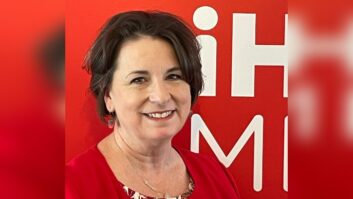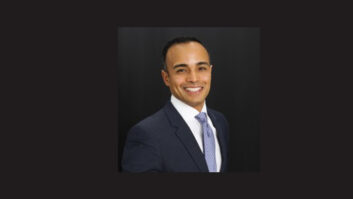
Although it may look like an April Fool’s picture, the “breaker identifier,” found by an engineer and pictured in Fig. 1, will work, but is not good engineering practice — or safe! Professionally-made switch boxes that do the job more safely can be found in hardware or Big Box stores.
However, an electrician friend of mine says big box stores actually sell a short line cord with a switch used to short the AC contacts and trip the breaker — which is inherently safe.
You just never know what you’ll find in that junk box.
***
Michael Dan Peavy is with WMDP(TV). He saw Dan Slentz’ descriptive article about the LyxPro adaptor. This is the adaptor that will work with a smartphone to permit connecting a professional broadcast microphone to the phone.
Dan wrote that he uses a Samsung Galaxy with the LyxPro, but says the adaptor works standard on most cell phones that use a four-conductor 3.5 mm plug. So if you’re looking to use this adaptor and buying a phone, be sure to take the adaptor along to the cell phone store to ensure compatibility.
***
In closing out his field maintenance business, longtime engineering consultant and Radio World colleague Mark Persons was clearing some of his workbench shelves. Fellow consultant and columnist Buc Fitch was the recipient of a redundant stereo Tellabs repeat coil.
In an attempt to replace the legendary Western Electric L-111(C), Tellabs thoughtfully made this accessory to slide into their active equalizing line amp cabinet/enclosure.
No sooner had it arrived on Buc’s workbench than in the course of troubleshooting a stereo generator problem did he need an accurate way to create an inverted audio signal. The Tellabs repeat coil solves that.
One cannot avoid checking the L–R adjustment on a stereo generator whenever you troubleshoot or adjust them. The goal is to invert exactly a common audio signal and then either adjust or measure that component.
In the world of telco audio circuits used for STLs and remotes, transformers are used for isolation, impedance matching and such arcane activities as introducing sealing voltages. Early in the game, a measure of flatness was achieved by stepping the 600-ohm source down to as low as 47 ohms, and then, stepping back up at the other end. Over a few miles this arrangement could maintain near-flat response to about 5 kHz. Comparing the two transformers in the measurement area of interest (50 Hz to about 5 kHz) showed nearly unmeasurable phase shift, and ditto for the frequency response — flat!
Buc added a few features of his own, shown in Figs. 2 and 3. These included the banana post to bring in the 600 ohm signal from the audio generator. Buc also added XLR-3M connectors for the outputs. A DPDT switch was added to reverse the phase.


Buc adds that, not knowing what the future will bring, and as he has a box of just the Tellabs-brand amp cards, he arranged the XLRs and the switch so the transformer card can slide out and the amp card back in without any component conflict.
The neat thing for broadcast engineers is that there are possibly hundreds of these transformers and their enclosures screwed onto the back boards of telco punch downs in basements and back rooms of both radio and TV stations nationwide — probably never to be used again by anyone. A good use of a redundant quality item, and everything but one XLR came out of the junk box.

Buc notes that the impedance switches are quite useful, as well. One can select 600 or 150 ohms on both “in” and “out” separately. This is useful so that you can match to 150 ohm mic inputs for balance adjust, phase check and frequency sweeps.
Take a look around your sites. Who knows what you might find?
Contribute to Workbench. You’ll help fellow engineers and qualify for SBE recertification credit. Send Workbench tips and high-resolution photos to [email protected]. Fax to (603) 472-4944.
Author John Bisset has spent 48 years in the broadcasting industry and is still learning. He handles Western U.S. radio sales for the Telos Alliance. He is SBE certified and a past recipient of the SBE’s Educator of the Year Award.












